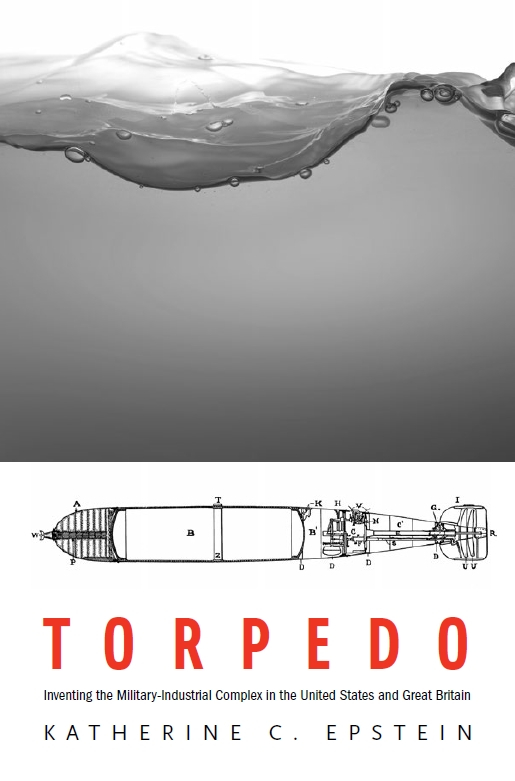In his 1961 farewell address, President Dwight D. Eisenhower popularized the phrase “military-industrial complex,” summing up the complicated relationship between government and private industry dominating the United States during the Cold War era. But just how did this relationship come to be?
Rutgers–Camden professor Kate Epstein explores the origins of this merger between the state and society in her new book, Torpedo: Inventing the Military-Industrial Complex in the United States and Great Britain, to be published in January by Harvard University Press. In this thorough analysis, Epstein uses the self-propelled torpedo as a case study to examine how the acquisition of advanced weapons technology changed the relationship between the public and private sectors in the United States and Great Britain in the two decades leading up to World War I.
Epstein argues that torpedoes represented a new class or type of technology that required a new relationship – a new procurement paradigm – between the public and private sectors. She explains that, up until the late 19th century, governments had either built weapons entirely themselves or purchased them as finished products from defense contractors in the private sector. “Torpedoes were so sophisticated and expensive that this traditional approach wouldn’t work,” explains Epstein, an assistant professor of history at Rutgers–Camden. “Neither governments nor private companies could develop and produce them from start to finish.”
What followed, she explains, was a hybrid relationship in which the government started to subsidize or invest in the development of experimental technology. According to Epstein, this investment in the research and development (R&D) phase, rather than purchasing weapons as finished products from the private sector, raised new intellectual property issues. “Suddenly you have multiple parties collaborating on the process of invention, and it becomes difficult to see who is responsible for and owns what,” she says.

This new relationship also paralleled an identical process that was occurring within each of these sectors, Epstein explains. Invention was becoming a more collaborative process; it was not just the work of lone inventors, but rather required input from many different people. “So, just as you were seeing intellectual property rights disputes between government and defense contractors, you were having these disputes between employers and employees,” she says.
Epstein notes that, in addition to an emphasis on legal issues concerning advanced weapons systems, her book explores the intersection of these matters with military, policy, diplomatic, business, and science and technology issues. For instance, she states that this new technology forced officers to examine the most effective means of employing these weapons in battle. She explains that, in addition to the emergence of torpedoes, practically every major weapons system used by navies at the time was changing, including guns, communications, propulsion, armor, and targeting systems for guns. “Just figuring out what the next battle was going to look like was phenomenally difficult for officers,” she says. “In order to understand the situation as it appeared to them at the time, we need to recapture that complexity.”
Likewise, Epstein explains, this advanced weapons technology introduced a range of new considerations regarding policy procedures. It was not obvious who in government had the expertise or should have the authority to make policy decisions about acquiring these weapons. Similarly, she notes that torpedoes had significant implications for geopolitical competition in the period leading up to World War I. Furthermore, she adds, the book explores torpedoes from a business perspective, examining the contractors and firms who helped to develop and build torpedoes.
“Throughout the course of the book, I am mapping the intersection of these different fields,” Epstein says. “A major contribution of this book is to say, ‘Look, this intersection is actually really crowded, and here’s what we need to understand about it. My answers to these issues are new, but I think that, even more fundamentally, the ways that I’ve defined the problems are new. I am positing that you have to look at all of these different factors.”
A resident of Philadelphia, Epstein earned a bachelor’s degree in history summa cum laude from Yale University in 2004, a master of philosophy degree in international relations from the University of Cambridge in 2005, and a doctorate in history from the Ohio State University in 2011. Her scholarship focuses on military history and international relations in the late 19th and early 20th century.